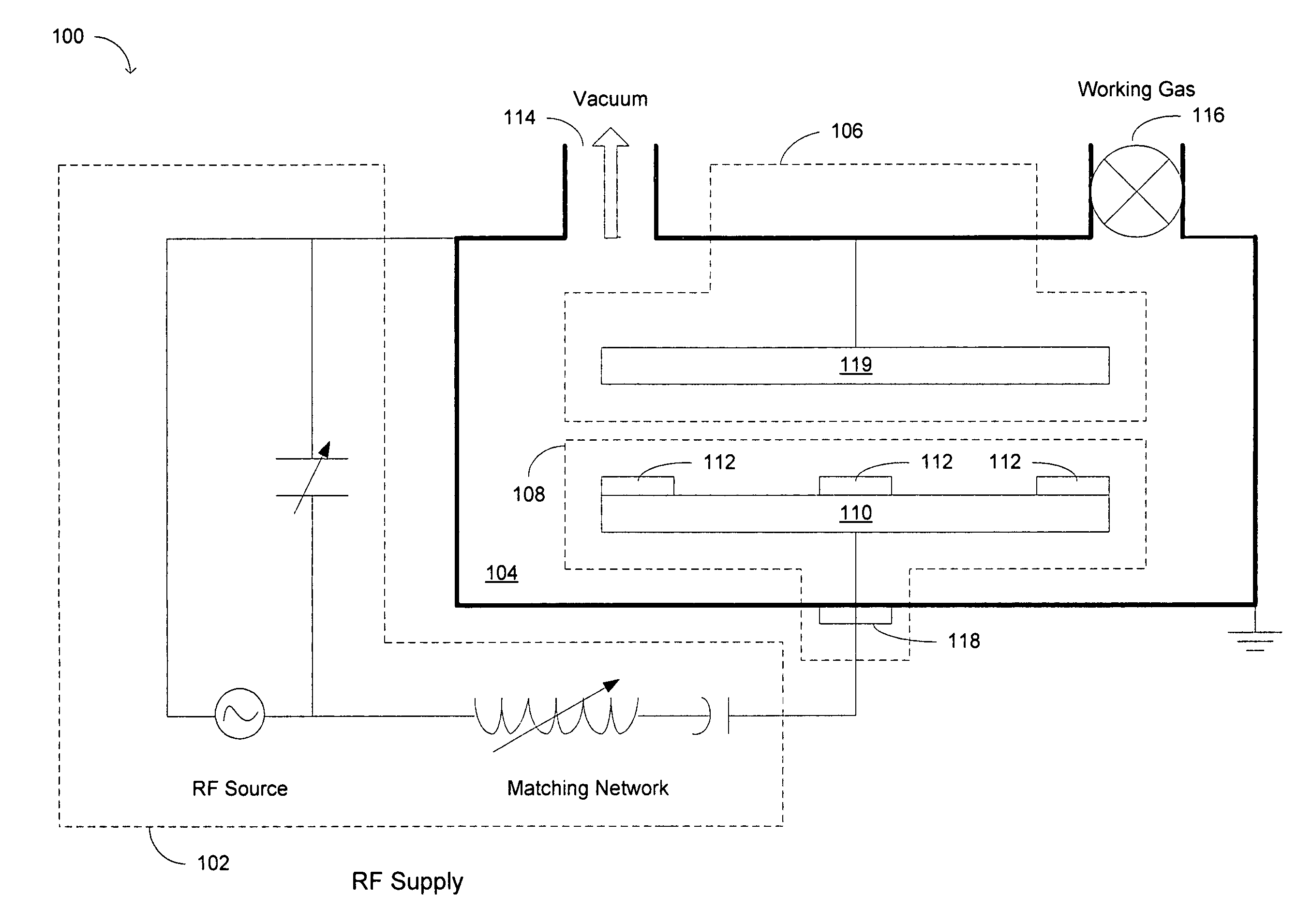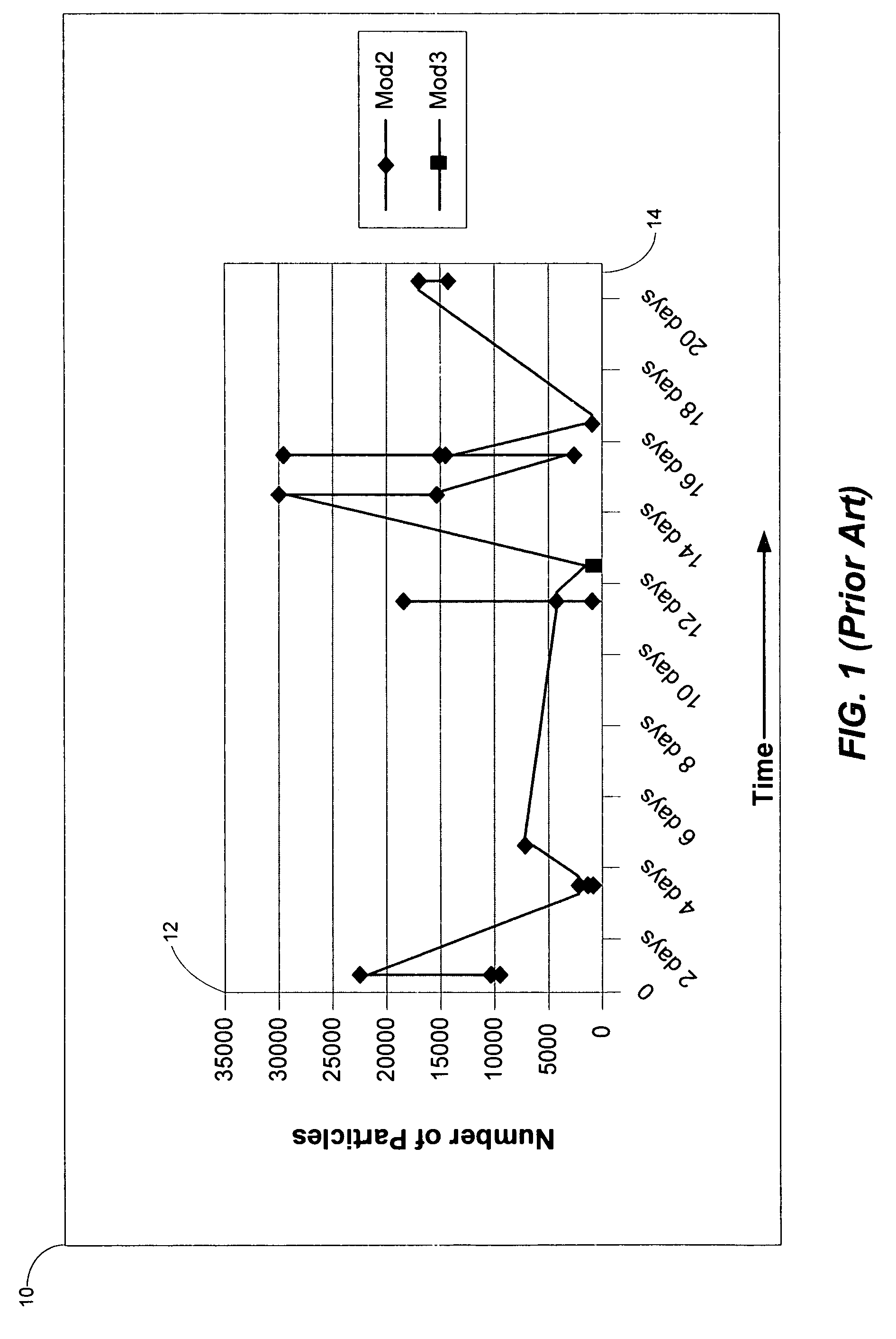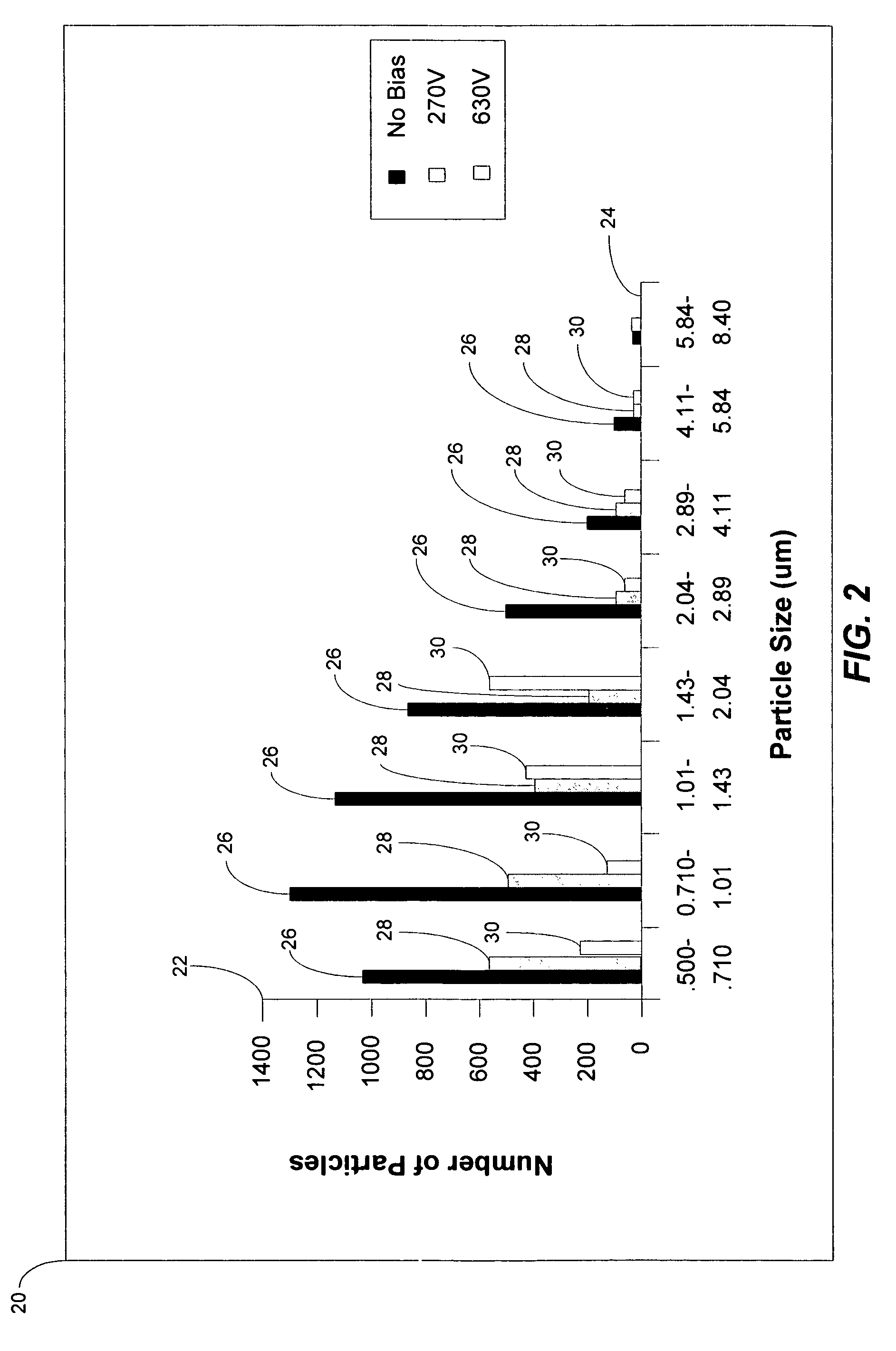In-situ method to reduce particle contamination in a vacuum plasma processing tool
a plasma processing tool and vacuum technology, applied in the direction of cleaning machines, carpet cleaners, applications, etc., can solve the problems of poor handling, outdated tool design, and severe impairment of the functionality of the device produced by such procedures
- Summary
- Abstract
- Description
- Claims
- Application Information
AI Technical Summary
Benefits of technology
Problems solved by technology
Method used
Image
Examples
Embodiment Construction
[0021]The embodiments of the present invention include a methodology to decontaminate particles in-situ without interrupting vacuum processing and can therefore be used to safeguard against yield detractors resulting from internal particle source inside of a vacuum tool or chamber. The methodology takes advantage of particle-substrate electrostatic Coulomb interaction as well as plasma glow characteristics. The principle is taught using examples from vacuum processing equipment with RF capabilities such as an RF diode sputtering system. Substrate is RF powered such that the self bias voltage is maximized. The charged particles are repelled by the Coulomb electro-static force and plasma potential gradient. However, this principle can be applied to other relevant vacuum technologies.
[0022]Referring now to FIG. 2, a graph 20 is shown of an example of a relationship between the particle vs. particle size when methods and apparatus of the present invention are employed. Ar is used as a w...
PUM
| Property | Measurement | Unit |
|---|---|---|
| voltage | aaaaa | aaaaa |
| pressure | aaaaa | aaaaa |
| diameter | aaaaa | aaaaa |
Abstract
Description
Claims
Application Information
 Login to View More
Login to View More - R&D
- Intellectual Property
- Life Sciences
- Materials
- Tech Scout
- Unparalleled Data Quality
- Higher Quality Content
- 60% Fewer Hallucinations
Browse by: Latest US Patents, China's latest patents, Technical Efficacy Thesaurus, Application Domain, Technology Topic, Popular Technical Reports.
© 2025 PatSnap. All rights reserved.Legal|Privacy policy|Modern Slavery Act Transparency Statement|Sitemap|About US| Contact US: help@patsnap.com



